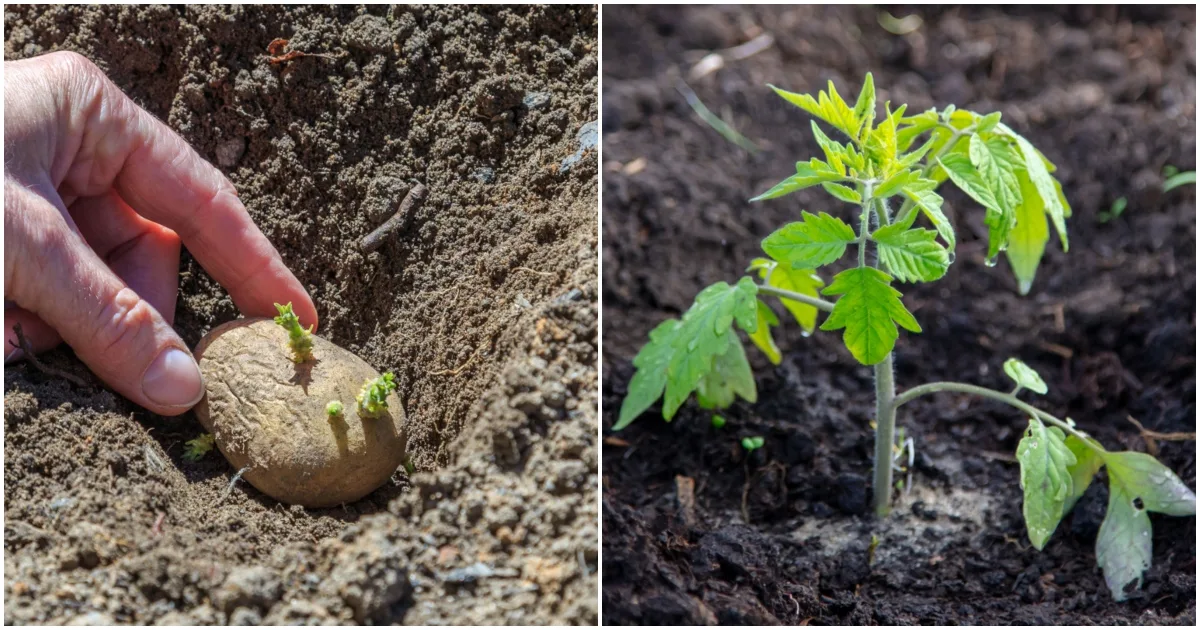
In the world of companion planting, there are two vegetable garden favorites that many consider enemies – potatoes and tomatoes. Unfortunately, they are also two of the most common vegetable garden plants for beginners and experienced gardeners alike.
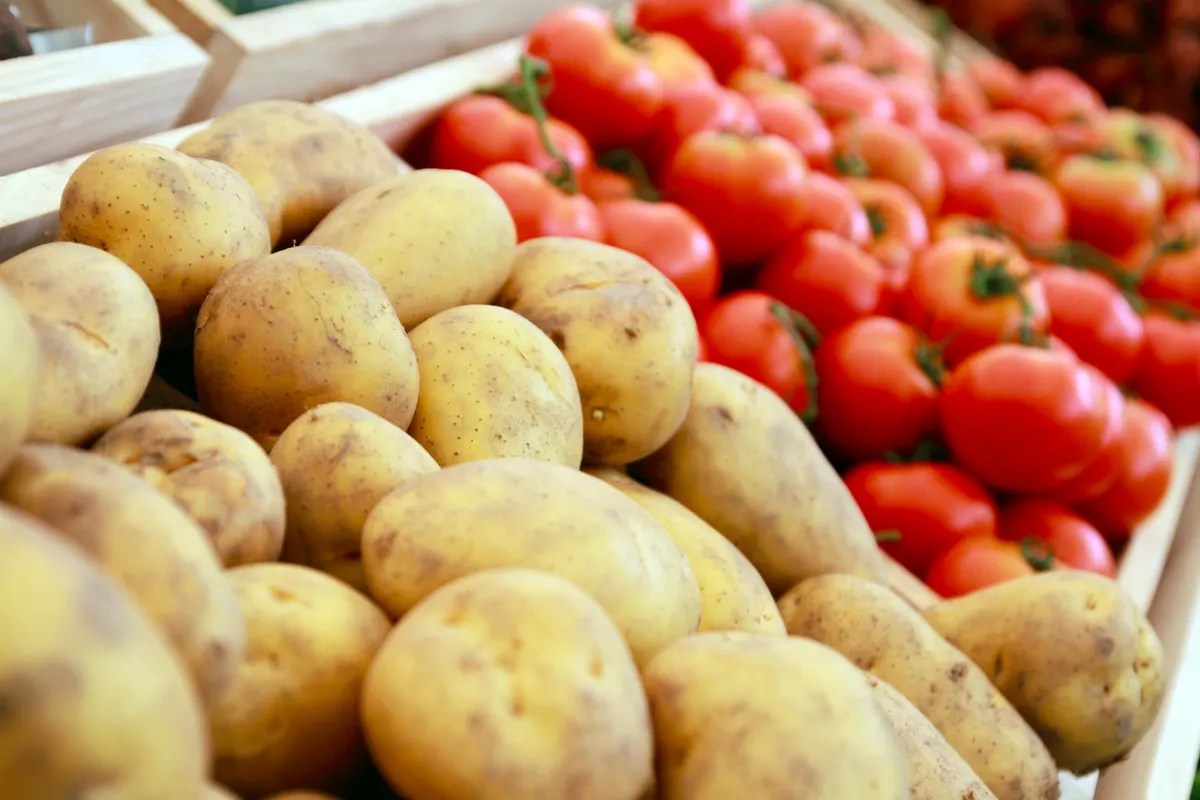
Planting these two veggies together is best avoided. But, if you’re committed to planting both, there are steps you can take to improve your chances of success.
Companion Planting Explained

If you’ve been in the gardening world for a while, you will likely have heard the term ‘companion planting’ at some point. The practice has been commonplace for hundreds of years, but the term itself has only recently gained the massive popularity it has now.
The resurgence of companion planting in the 1970s is thanks to the organic gardening movement. Proponents argued that some plants can improve each other’s growth planted side by side, positively impacting yield without the use of harmful chemicals or unnatural amendments.
Two plants can be companions for a number of reasons. Some release certain chemicals that deter pests of the other plant. Their growth may improve soil composition for the other plant or provide shade overhead at the perfect time of day.
Alternatively, it can be as simple as both plants preferring the same growing conditions, meaning one will not grow effectively at the expense of the other.
Here’s our list of the eight best companion plants to grow with tomatoes and an entire article dedicated to the benefits of planting marigolds with tomatoes.
Does It Really Work?
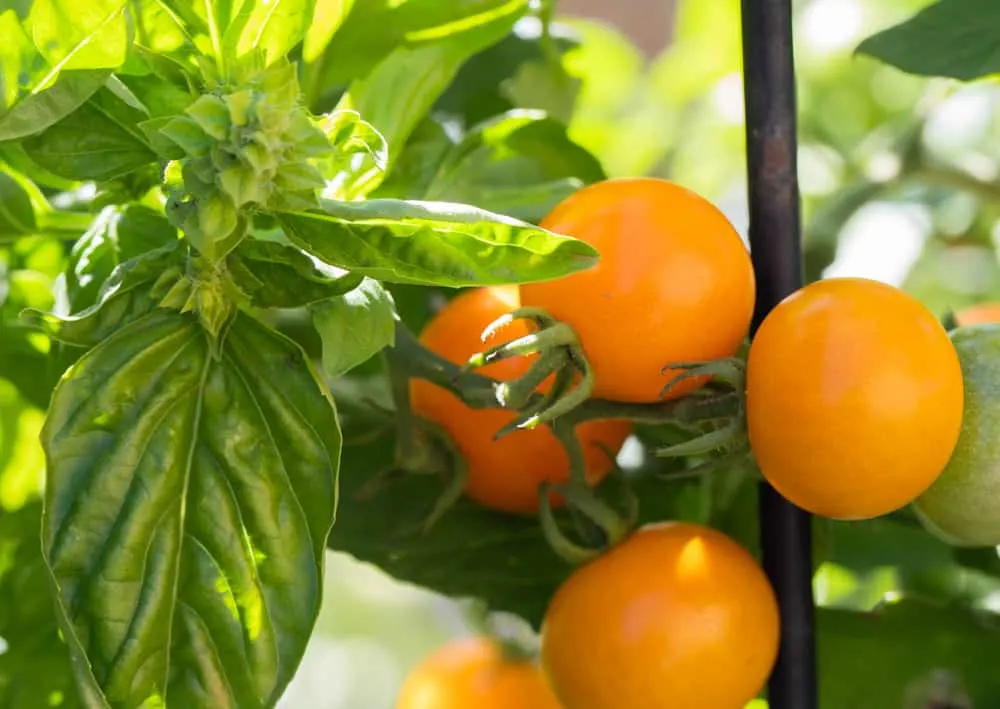
Not everyone agrees with the principles behind companion planting. There isn’t much solid scientific evidence to back up some of the claims, and some have even labeled it pseudo-science. But, while it hasn’t been proven, there is plenty of anecdotal evidence to go by, as well as some ideas that just make sense.
For example, we can deduce that two plants that prefer different soil conditions or need different levels of water will not grow well when planted next to each other. For the more complex benefits, like pest deterrence, there are plenty of gardeners who have experienced benefits firsthand and even some smaller studies that show positive effects.
Companion planting is not guaranteed to make your plants grow better or stop all pests and diseases from taking hold. However, it does have the ability to improve the growth and yield of your veggie garden when done correctly.
Why Tomatoes And Potatoes Are Bad Companions
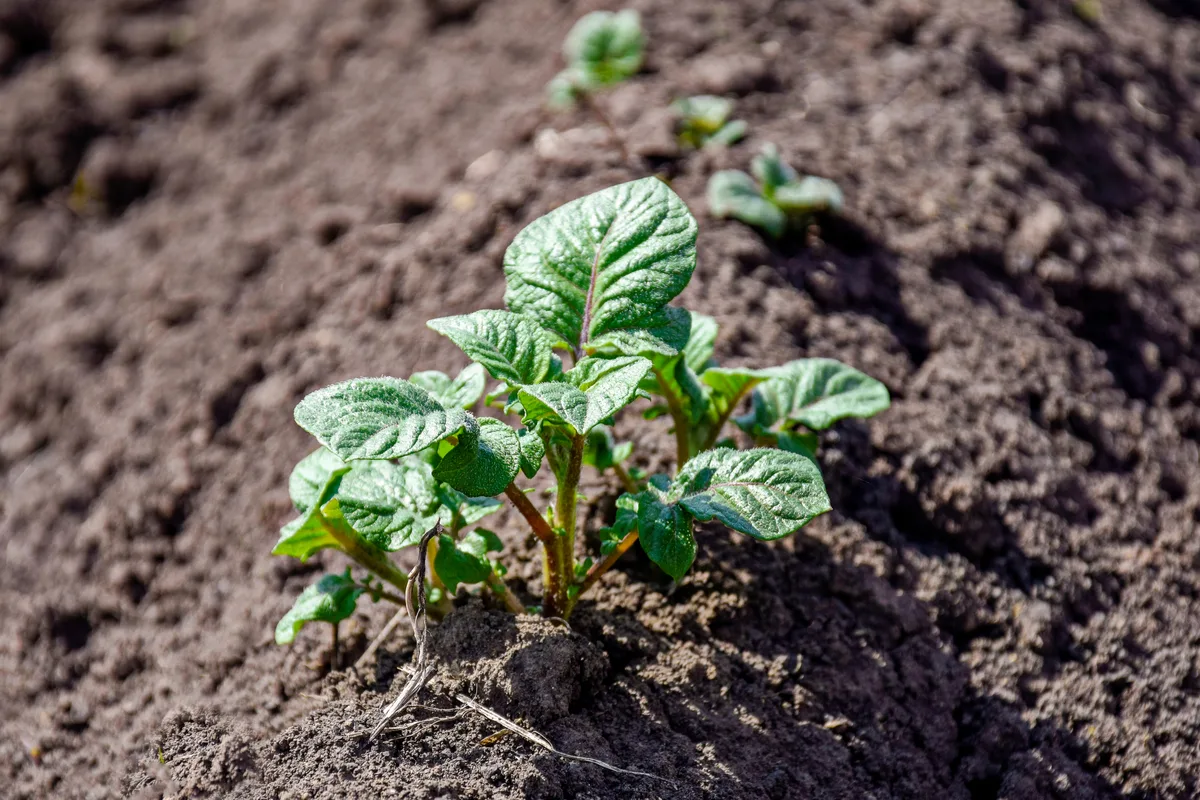
One of the first pairings discussed in vegetable gardens is potatoes and tomatoes. Not only are these plants one of the first new gardeners reach for when starting a vegetable patch, but they are also versatile veggies easy to use in the kitchen in a wide range of dishes.
Unfortunately, as many gardeners already know, tomatoes and potatoes are not good companion plants. Most advice strongly warns against planting these two together to avoid the risk of ruining your harvest and potentially other plants in your veggie garden.
There are many reasons for this, but the strongest one is pest and disease-related.
Tomatoes and potatoes are part of the same genus – Solanum – from the Nightshade family (Solanaceae). This means they are susceptible to the same pests and diseases, particularly the incredibly damaging Early Blight and Late Blight.
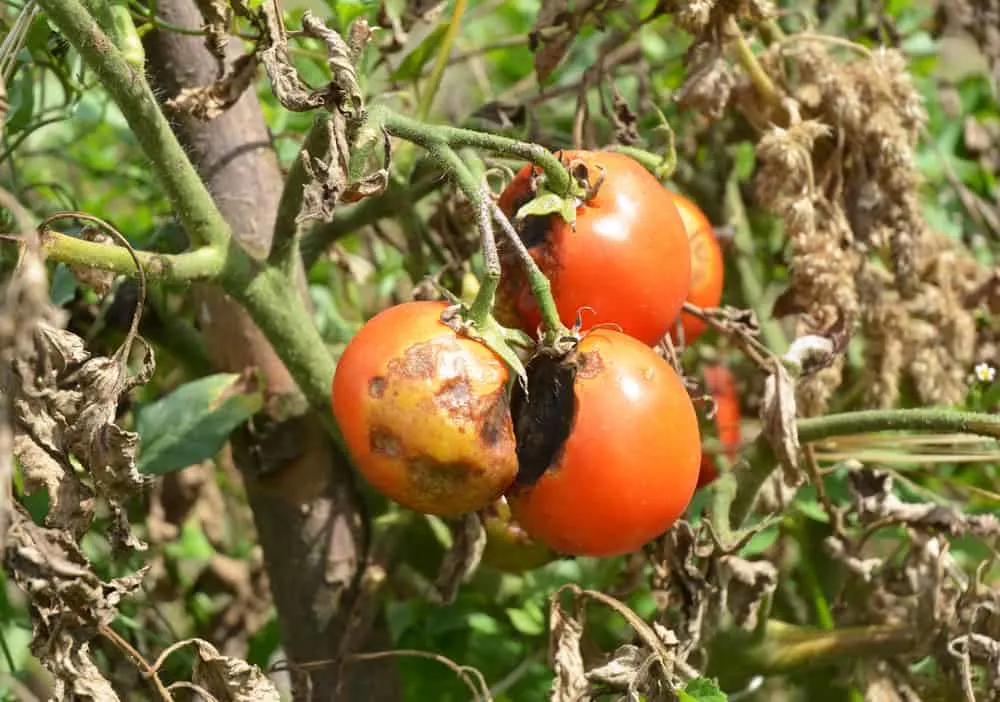
Planting tomatoes and potatoes together increase your chances of encountering any one of these diseases, spreading to either plant and the other plants in your garden too.
It’s why potatoes feature in our seven worst plants to grow near your tomatoes.
When planted in the same soil, both tomatoes and potatoes also compete for nutrients. Without the right nutrient levels, growth will become stunted and your harvest will be poor from both plants.
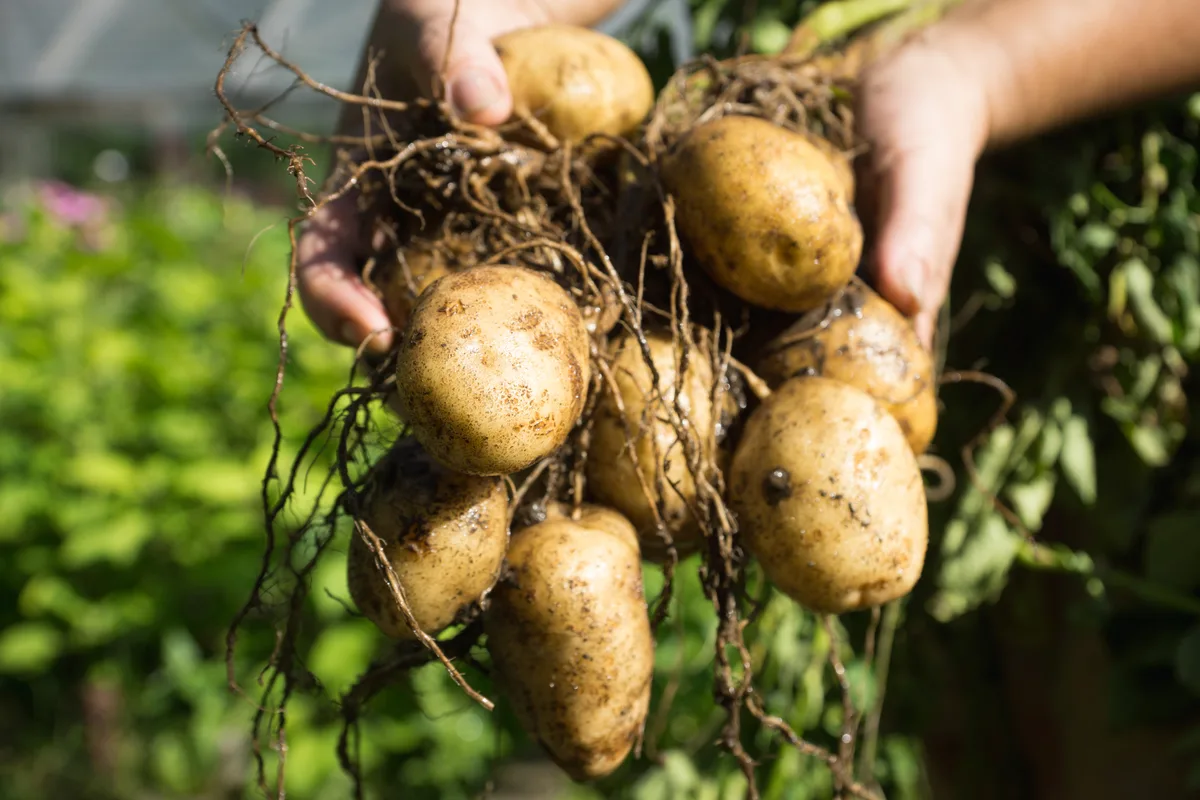
Harvesting is also a concern. To harvest potatoes, the plant needs to be pulled from the ground. If kept too close to tomatoes, this process can disturb the tomato root system, causing a host of problems that are incredibly difficult to fix.
What Can You Do About It?
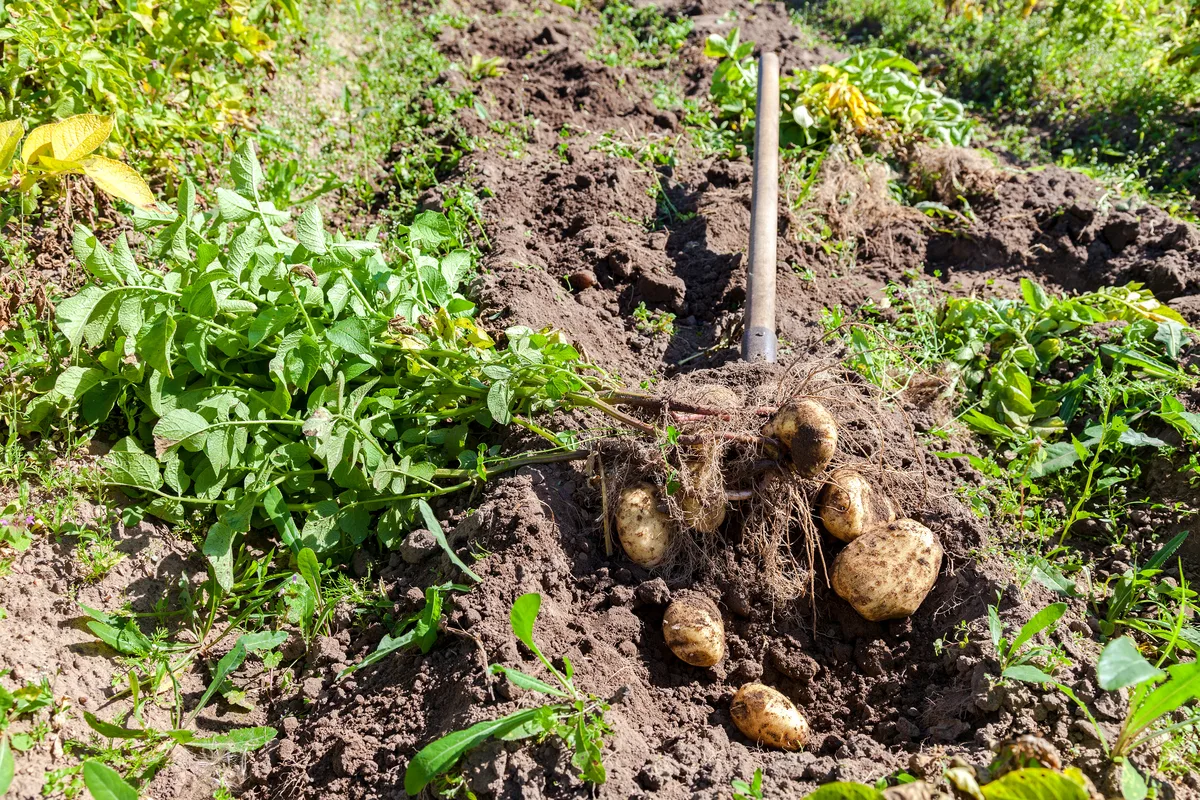
These concerns mean planting these two species together is best avoided. However, many of us have smaller gardens without a lot of space to grow, limiting our options. Maybe you’re one of the picky eaters who will only eat tomatoes and potatoes, leaving you nothing else to plant.
If that is the case, all hope is not lost. With a few conditions met and a keen eye throughout the season, you can successfully grow these plants together without ruining your harvest.
How To Plant Tomatoes and Potatoes Together
Plant Disease Resistant Varieties
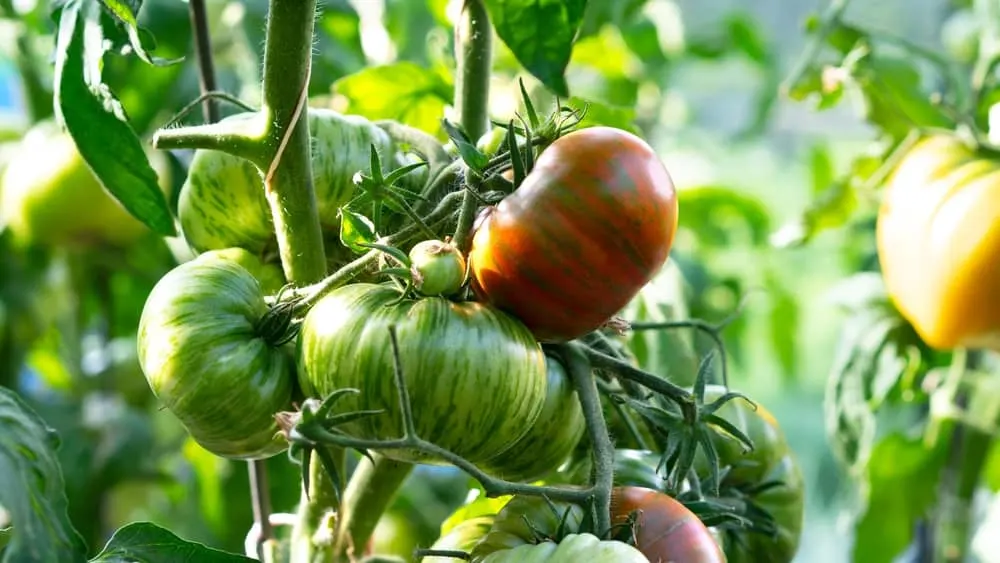
Getting the process right starts with your choice of tomato and potato. Thanks to horticulturalists and agriculturalists, there are now many disease-resistant tomato varieties to choose from.
When planting these varieties together, your risk of spreading disease between both plants is limited, reducing one of the major concerns of companion planting with these two species.
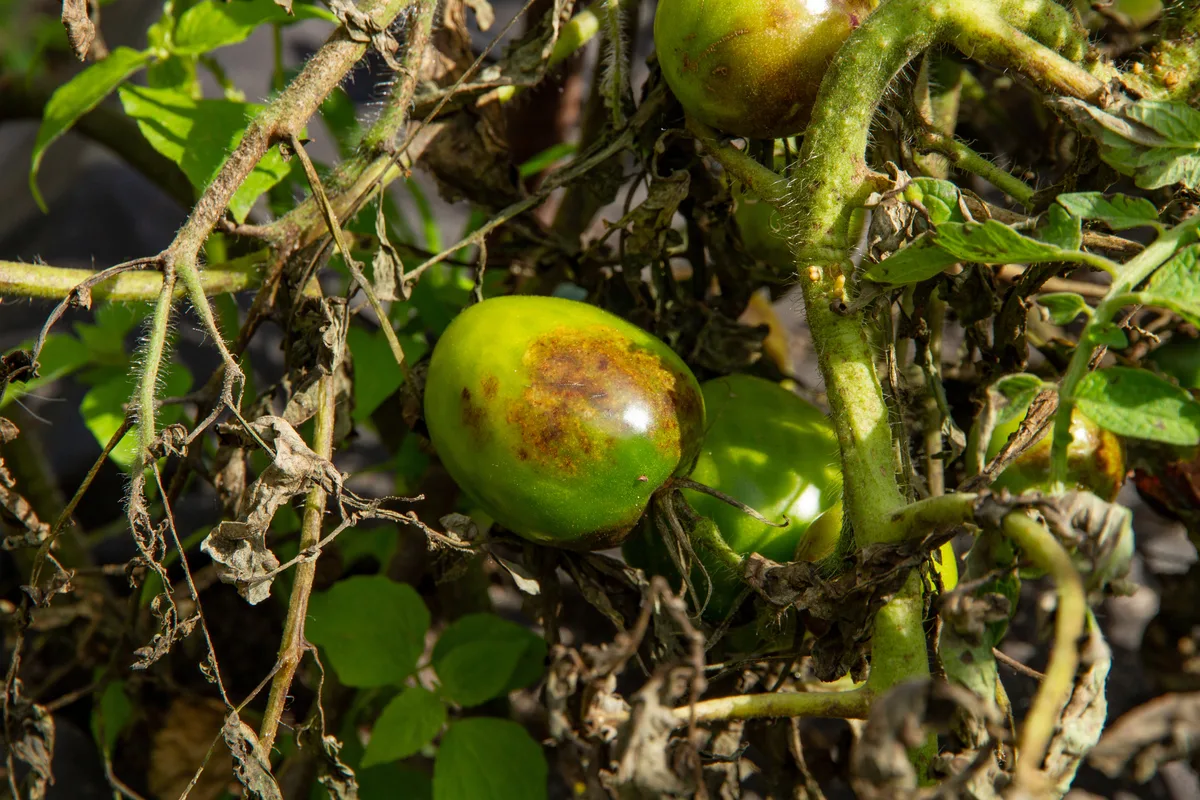
As Blight is one of the most common and concerning problems for both tomatoes and potatoes, look for varieties resistant to these diseases specifically. It won’t stop it completely, but these resilient types are less likely to encounter problems. These specialized plants often come with other benefits like higher yield or faster growth too.
These codes will appear on your packet of tomato seeds, indicating their resistance to certain diseases:
- EB Early Blight
- LB Late Blight
- V Verticillium Wilt
- F Fusarium Wilt
- N Nematodes
- A Alternaria
- T Tobacco Mosaic Virus
- TSWV Tomato Spotted Wilt Virus
Space Them Correctly
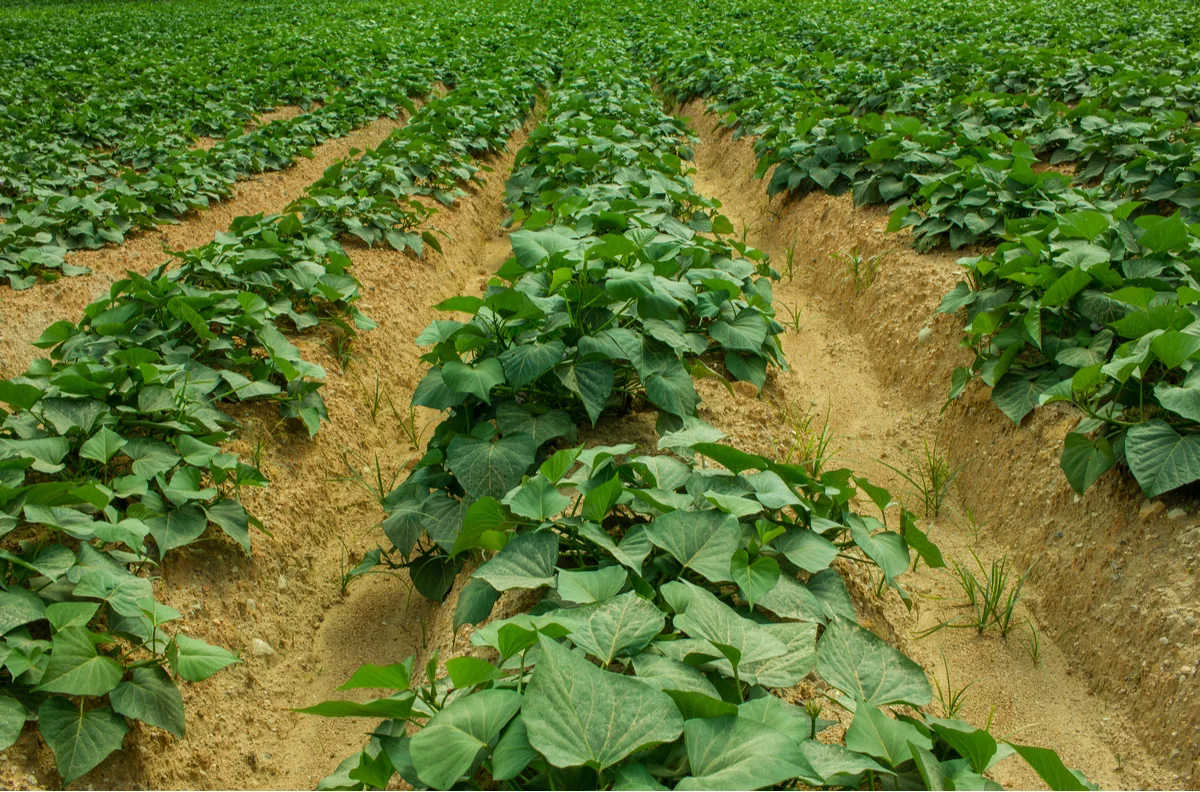
To avoid the spread of shared pests and diseases, regular spacing will not be enough for these plants. To ensure sufficient airflow and keep the leaves from coming too close together, a separation of at least 5 feet is recommended, preferably closer to 10 feet if you can manage it.
This spacing also stops the tomatoes from shading the potatoes once fully grown, especially if they are indeterminate varieties. Both plants need a full day of sun – anything less will limit your harvest.
Plant In Raised Beds
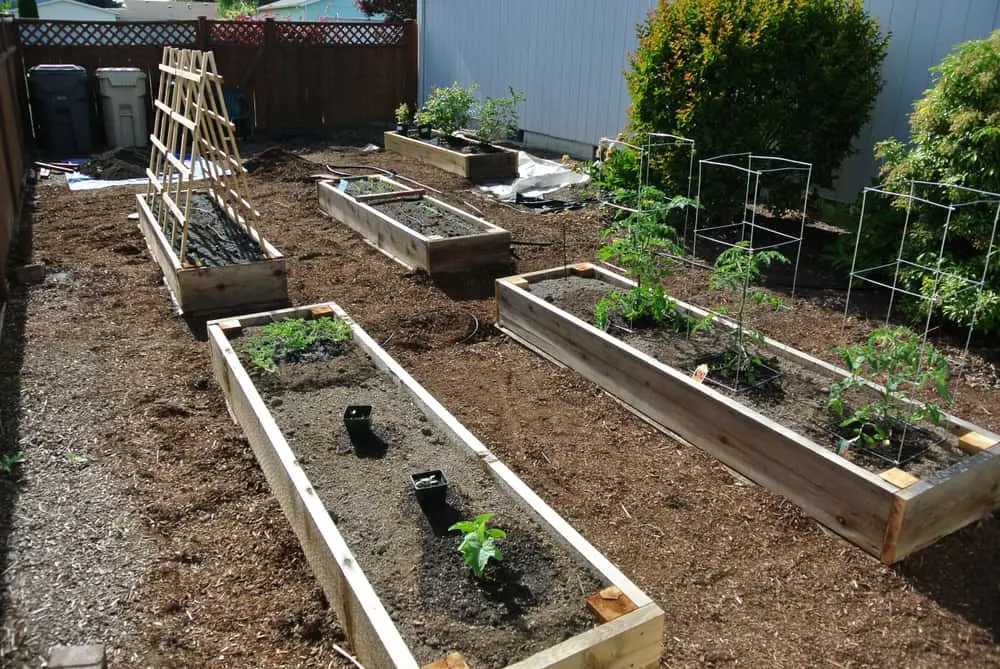
Even with sufficient spacing, the expansive root system can still occupy the same space as the potatoes (especially if you follow this tomato planting method that gives the strongest root systems and best harvests).
This close proximately means higher competition for nutrients in the soil, impacting everything from leaf and stem growth to fruit development and your overall harvest. It also means harvesting your potatoes is bound to impact the root system of your tomatoes, disturbing growth and affecting yield.
The best way to keep these two plants close but separate is to plant in separate raised beds.
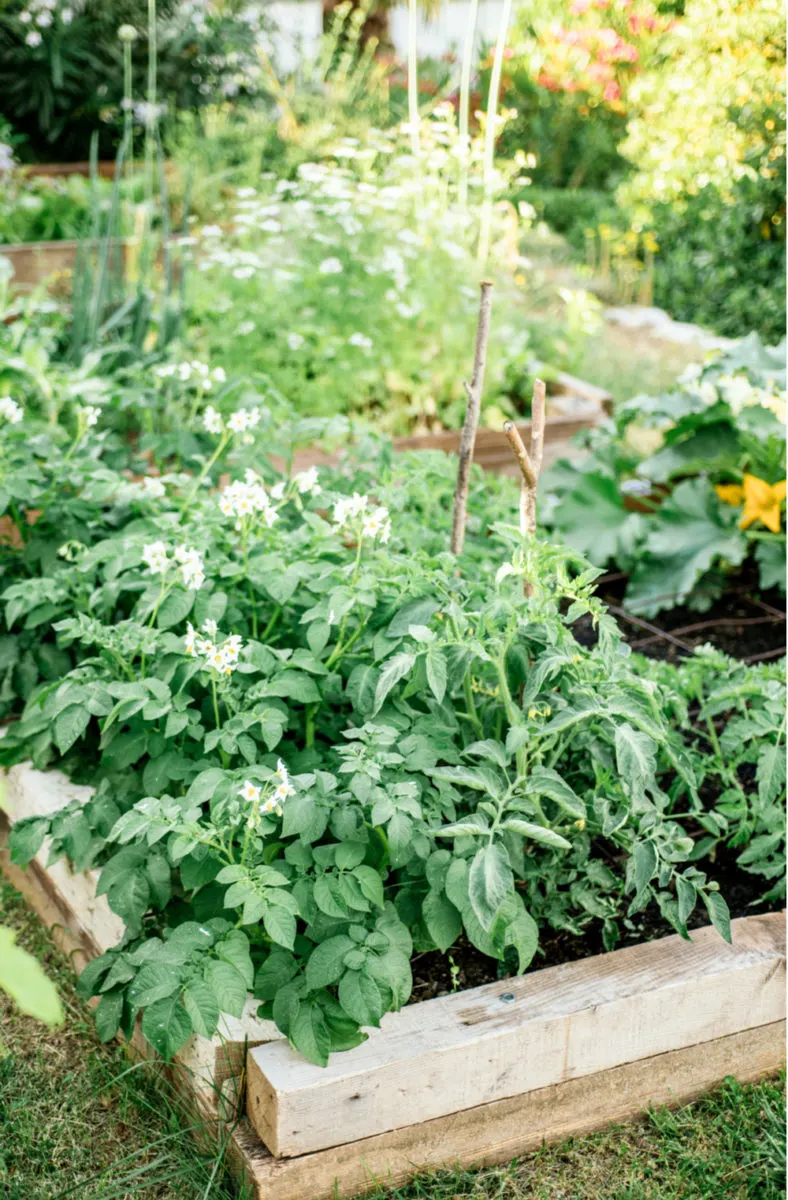
This popular method allows you to keep the plants contained and in separate soil, eliminating problems with competition and harvesting. You can give each one specialized care while keeping them close by, improving the harvests from both plants.
Water The Soil, Not The Leaves
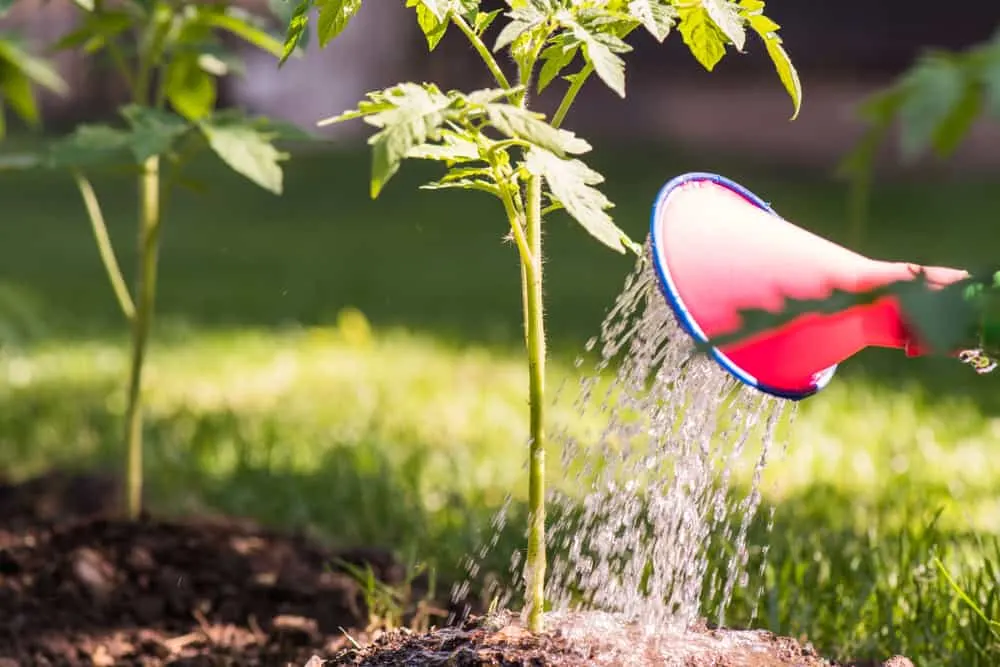
Diseases are generally more frequent in wet and humid conditions. If water sits on the leaves and fruits for long periods, this increases your chances of fungal or bacterial disease that will then spread to the susceptible neighbor nearby.
Correct watering methods therefore limit this concern, decreasing your risk of encountering disease in the first place. The key is to avoid overhead watering at all costs, avoiding the leaves and fruits and focusing only on the soil. This can be difficult with a hose or watering can, so installing irrigation to water the soil directly is best.
Keeping the plants in full sun and in the right temperatures also increases evaporation, meaning the water does not sit on the leaves for too long. This helps combat periods of high rain where getting water on the leaves cannot be avoided.
Check For Diseases And Pests Often
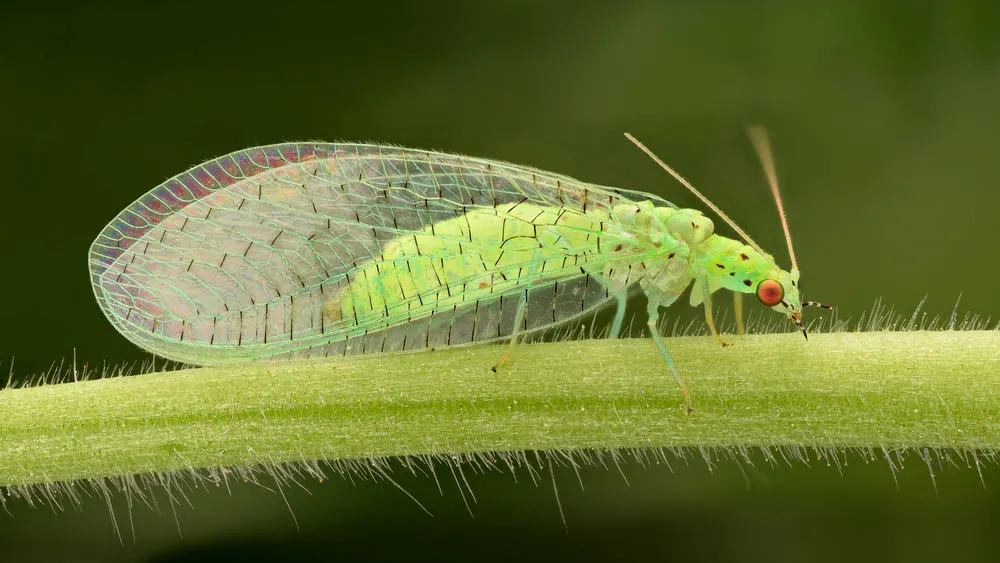
Your final line of defense is a keen eye. If you catch a disease or pest on either your potatoes or tomatoes early, you can stop its spread to the other plant, saving both harvests at the same time.
Whenever you head out into the garden to water, take your shears with you and inspect the leaves of both plants clearly. Keep an eye on the undersides and areas between leaves and stems.
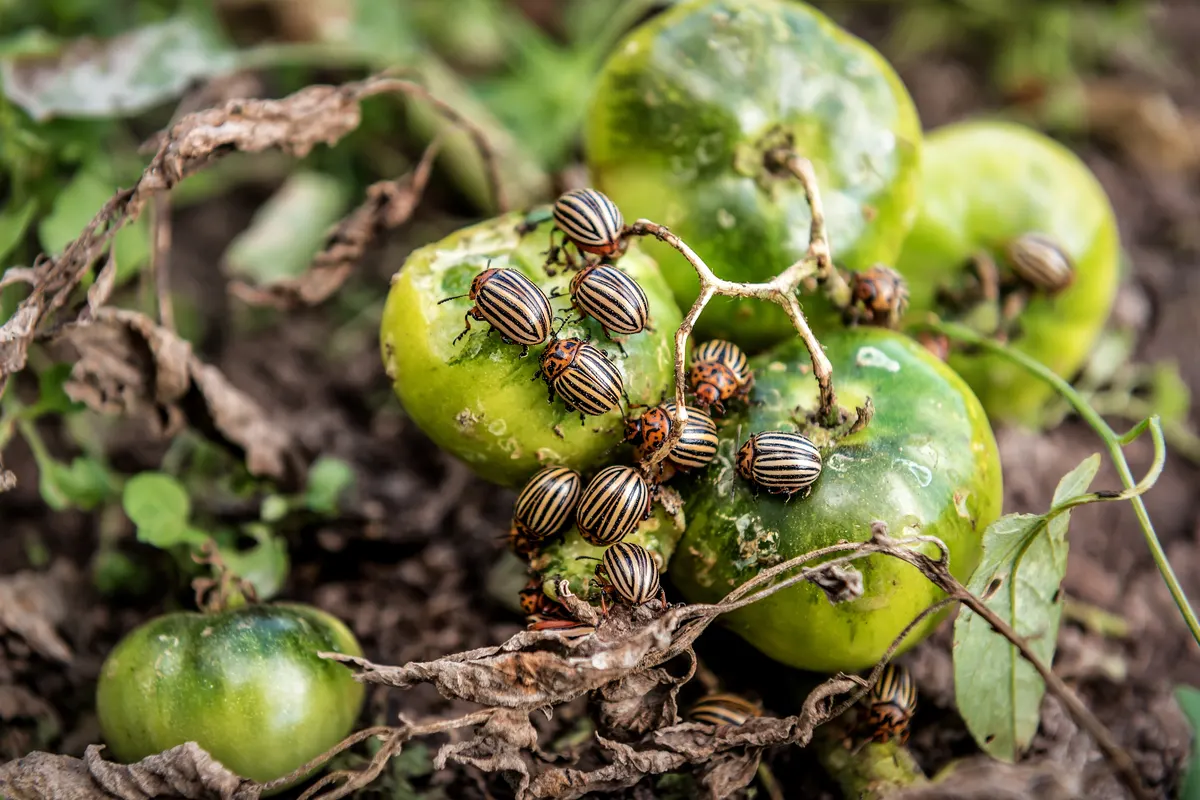
Remove any pests or signs of disease immediately and use preventative disease sprays to stop their spread. Make sure you clean your shears between uses or you will simply be the catalyst in spreading disease.
Although planting tomatoes and potatoes together is not recommended, it’s not impossible either. With a few preventative measures, you can keep both plants healthy and productive throughout the season.
